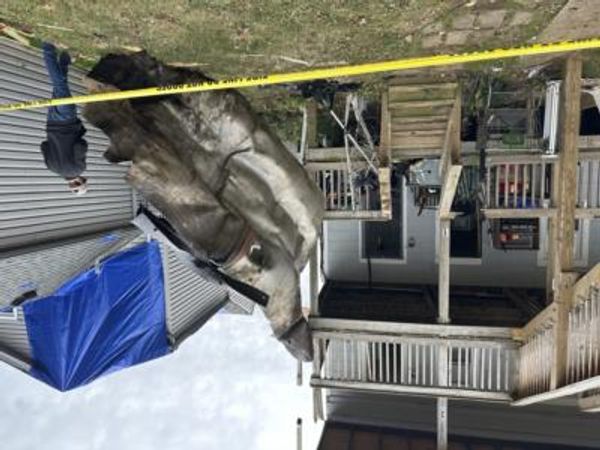
In a year of environmental ups and downs, a hopeful story of recovery is afoot in California. A grey wolf pack gave birth to eight pups this spring, it was recently confirmed, offering signs of a remarkable comeback after wolves were wiped out in the state more than a century ago.
The births in the Whaleback wolf pack, based in northern California’s Siskiyou county, happened in the spring but were only confirmed by California’s department of fish and wildlife in November. They may be a sign that wolves who entered the state from Oregon several years ago are thriving.
“This is a really great sign of the health of wolves,” says Amaroq Weiss, a biologist who works as the senior wolf advocate for the Center for Biological Diversity. She says the scientific literature shows that wolves can have anywhere from two to 10 pups, but it’s pretty typical to have five or six. “The fact that eight pups have made it this far into the year is really exciting.”
Wolves were hunted to extinction in California a century ago. Then in the 1970s they gained protection under the Endangered Species Act, and wolves were slowly reintroduced to the Yellowstone area in Wyoming. From there, they began to do what wolves do: roam.
Wolves were never reintroduced in California, rather they came here because the living was good. Wolves from Yellowstone entered Oregon and eventually in 2011, OR-7 made his way into California. The state, with its dense forests, plentiful deer and other prey, and vast expanses of wilderness where roads don’t pose a fatal threat, is in many ways an ideal home.
“We used to have wolves here and now they are back, using the landscape and still producing offspring,” Weiss says.
Wolves in California are poised to thrive. In Oregon, the first wolves appeared in 1999 – but it wasn’t until 2008 that they had their first pack confirmed. Contrast that with California, Weiss says: the state has far fewer wolves, but they are making themselves at home faster. In 2015, the first pack was confirmed, and in 2017, the Lassen pack was established – and they have been having pups every year since.

The Whaleback pack was only confirmed in 2020, and had a litter in 2021 – and now a second in a row.
The state is typically careful about releasing numbers of pups – earlier this year, officials had confirmed the births of pups, but could only detect six in the litter. They use a combination of strategies to count the wolves, looking where collared wolves are spending time. Those locations usually point to the den site or the so-called rendezvous site, which is where pups are babysat by an older teen wolf while the parents are out hunting. When there’s a cluster of data in those spots, officials set up motion-activated cameras in the area and also collect scat – which can tell the age and sex of individuals, based on the size and DNA content. It takes some time, but it usually gives accurate counts, Weiss says.
Last year, the Whaleback pack had seven pups, and five are still with the family (it’s not known if the other two dispersed out to start their own packs or died). The wolf pups this year would have nursed for about five weeks and then were fed regurgitated meat from their parents. They start to go out with the pack at around six months old – just learning and watching, passing on their culture. They probably won’t participate in a hunt until they are a year old, and won’t become skilled until they are two or older.
Other states don’t do their wolf counts until the end of December, when only the hardiest wolves have survived – so it’s a good sign that the litter of pups this year seems to be thriving.
The pack is one of three active groups in California. The second, the Lassen pack, lives in western Lassen and northern Plumas counties and also produced a healthy litter of five pups this year. This pack has produced offspring every year since it was confirmed in 2017. In 2020, it had two breeding females and two litters, with a total of nine pups. “These wolves form multigenerational families just like an extended family would,” Weiss says.
The third is the Beckwourth pack, in south-east Plumas county, which was first observed in 2021.
The future of wolves in California depends on what happens in Oregon, where population growth has slowed since state protections for wolves were removed in 2015.
Weiss says that’s due in part to wolves being killed to protect livestock, a controversial practice. And eight wolves have been found poisoned – a crime that has gone unsolved. “The statistics also say that for every illegally killed wolf discovered, there’re one to two more that no one will ever find.”
With the population situation in Oregon remaining troubling, it’s unclear if the steady influx of genetic diversity into California will continue. But there is still a lot to celebrate. “It’s really a remarkable thing that has happened here,” says Weiss. “It’s pretty rare where you have nearly eradicated a species and it starts to come back on its own.”







